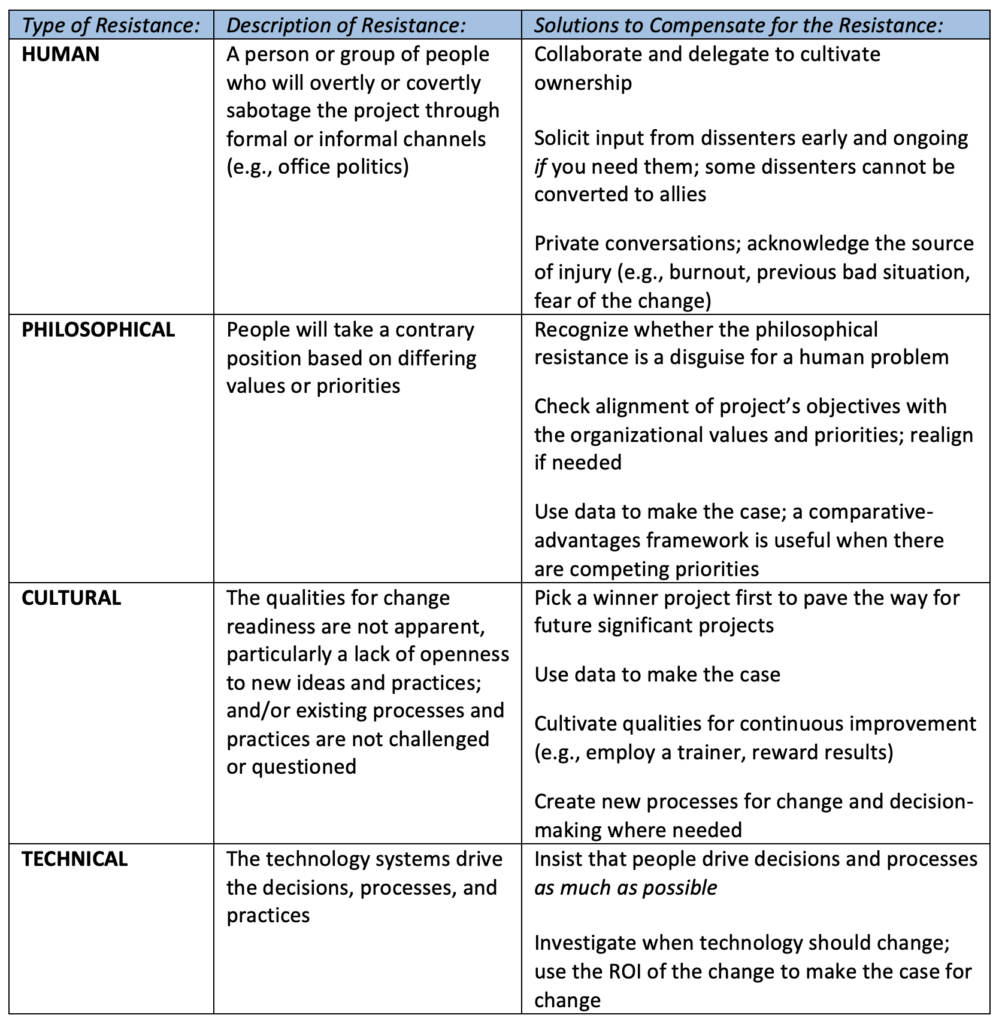Collaboration is the usual go-to tactic to achieve consensus within a team. But what happens when the collaborative process hits obstacles or stalls out? How can you navigate through the collaborative process to continue working toward consensus?
Four Steps to Creating Consensus
Consensus is a complicated negotiation among people, processes, and systems. Try these four steps to build consensus.
- Identify whether consensus is desirable. Ask yourself: Do you really want to do to the work to achieve true consensus? Or do you simply want the group to agree with you and help you execute the project? If the latter, then forget consensus. In the latter case, be transparent about what you want to do, how it will be executed, and why you aren’t seeking group input on it (e.g., time constraints). On the other hand, consensus is achievable when time is on your side, the input of the group is valuable to the final product, you want to create new learning on the existing processes and practices, and you believe any resistance could be damaging to the work product or future relationships.
- Assess the resistance. It’s common to hit resistance during the consensus process. Most flavors of resistance can be classified as human, philosophical, cultural, or technical. See the table for details.
- Apply the tactics to overcome the resistance. Each type of resistance has compensation tactics to soften the resistance. See the table for details.
- Maintain the relationships. Congratulations – you’ve achieved consensus! But don’t undermine all the hard work to build consensus by blowing it now. You still need to nurture the relationships of the people who contributed. Otherwise, the collaborators will sense being used and you will become a “one-and-done” success story. Here are some ways to maintain the relationships, which will help create the conditions for consensus next time:
- Communicate regularly on updates and outcomes of the project;
- Demonstrate care, provide resources, and be accessible to the collaborators;
- Give credit wherever its due – remember, you didn’t get there alone;
- Celebrate victories; and
- Document and share the learning with the larger organization. When the project learning extends its reach, there is a sense of pride and ownership in contributing to the greater organizational good.

Beware of Groupthink!
Consensus is ideal but what happens when there is false consensus, and members of the team aren’t actually on board? This phenomenon is called groupthink, which is the illusion of consensus (Beebe and Masterson, 2012). Groupthink results from a dysfunctional absence of conflict or avoidance of conflict. The causes are a lack of group consideration of the advantages and disadvantages of the decision. You can see groupthink when actions are justified rather than evaluated, people are overconfident in the decisions, team members feel pressure to support decisions, decisions are made quickly, and team members prioritize the leader’s opinion over others.
To prevent groupthink, leaders can empower team members to question the merits of a project. Leaders should directly solicit the critical assessment of the team, especially the members who are naturally quiet. (Although tread carefully with team members who dislike being put on the spot.) Leaders can role model an evaluative model by questioning actions and decisions, especially their own.
References
Beebe and Masterson. (2012). Communicating in small groups. 10th Edition. Allyn and Bacon.






